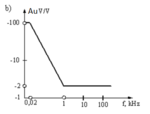DavidYebadlo
Junior Member level 1
Hi.
I designed a system with an operational amplifier that must meet the following frequency characteristics:

My layout diagram in LTspice

and it's the characteristic:

Should I change the voltage source in the schematic? And what type should I change to? Electronic components and their parameters in this system are selected correctly, so it is not their fault.
Thank you in advance for your help!
I designed a system with an operational amplifier that must meet the following frequency characteristics:

My layout diagram in LTspice

and it's the characteristic:
Should I change the voltage source in the schematic? And what type should I change to? Electronic components and their parameters in this system are selected correctly, so it is not their fault.
Thank you in advance for your help!

